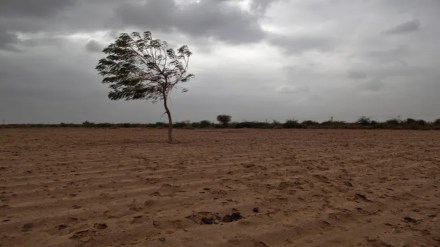If the met department’s forecast of a below normal rainfall and above normal temperature during January-March season especially in the northern states, turns true, yield of several winter crops including wheat, mustard, chana and horticultural crops could be hit, experts said.
“As seen in the last few years, extreme weather events would adversely impact the crop yield especially as such incidents occur prior to harvesting of the crop”, P K Joshi, agricultural economist and member, Supreme Court panel on farm laws, told FE.
Joshi stated that to mitigate impact of higher temperature or surplus rainfall, there is need to go for inter-cropping to protect the soil as well as ensure yield losses because weather events compensate by increase in yield of other crop.
Last year the chana or gram output was impacted severely leading to decline in output and soaring of prices despite the government relaxing imports norms. In 2022 and 2024, wheat crops was hit by above normal temperature and unseasonal rains in March, just prior to harvesting of the crop.
The government officials have stated that so far rabi crops sowing have been robust and standing crops are unlikely to be impacted provided there are extreme weathers such as excessive heat or rainfall during the second part of March, when the crops such as wheat, mustard and chana are ready for harvest.
India Meteorological Department (IMD) in its forecast has stated that rainfall during January-March season, 2025 is likely to be in the normal range or 88-112% of the benchmark – long period average (LPA). However the rainfall over north India where wheat, chana and mustards are sown in a large area, is most likely to be ‘below normal’ or less than 86% of LPA.
Erratic weather phenomena like excessive rainfall in a short span of time and heat waves have also impacted yield of several horticultural crops like onion, tomato and vegetables leading to volatility in prices. The Reserve Bank of India (RBI) in a bulletin last year had flagged how climate change is fuelling food price rise.
Meanwhile with less than a fortnight left for the rabi crops sowing season to be over, sowing of rabi crops such as wheat, pulses, oilseeds and coarse cereals have crossed the year-ago level at 61.49 million hectare.
“While large-scale impact on rabi crops because of higher temperature and lack of rainfall is ruled out, there may be some impact on horticultural crops including fruits and vegetables,” Binod Anand, member of the MSP committee set up by the agriculture ministry, said.
Anand said the village based weather stations are being set up at panchayat level to provide advance information to farmers on occurrence of extreme weather events.
